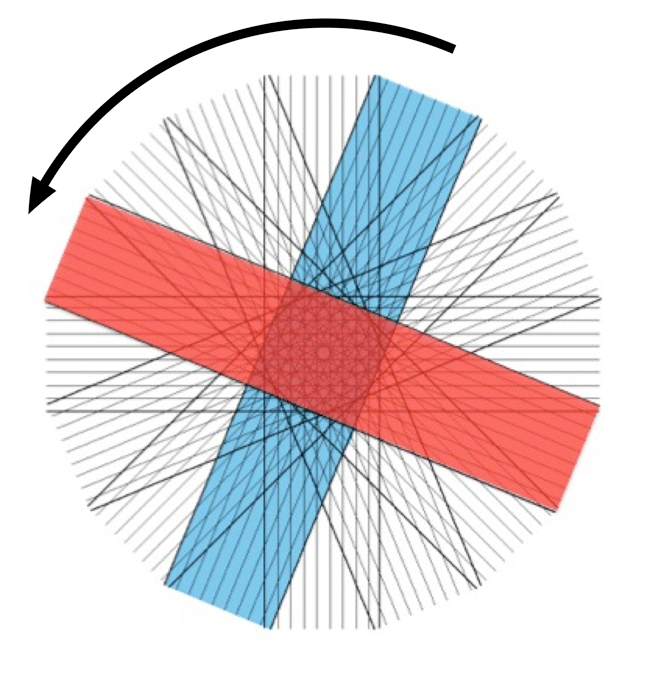|
The PROPELLER (Periodically Rotated Overlapping ParallEL Lines with Enhanced Reconstruction) technique was developed by Pipe in the late 1990s as a motion reduction method. The basic idea was to sample k-space in a rotating fashion using a set of radially directed strips or "blades".
Each blade is composed of multiple parallel phase-encoded lines that can be collected using fast spin echo or gradient echo methods. In common practice, 8-32 blade lines are acquired in a single shot. The blades are then rotated by a small angle (10°−20°) at which time a second set of data are acquired. The process continues until imaging data from the entire k-space circle has been collected.
|
Advanced Discussion (show/hide)»
Further comments on PROPELLER imaging
Although the center of k-space is highly oversampled, the "corners" of k-space are not sampled at all. However, these locations only contribute high spatial frequency information at oblique angles within the final image, and so are often considered the "least important" regions of k-space.
If there are L lines per blade and N blades, the equivalent imaging matrix diameter M is given by the equation LN = πM/2.
Complete coverage of the k-space circle (without gaps between the blades) therefore requires a factor of π/2 ≈ 1.57 times as long as coverage using a Cartesian (rectangular) method. The degree of blade overlap (angle between the blades) is usually an operator-selectable parameter given as a percentage with a vendor-specific name such as "blade coverage factor" (Siemens), "MultiVane percentage" (Philips), or "k-space filling factor" (Toshiba). A coverage factor of 157% would be gapless, while a coverage factor of 100% would not impose any time penalty compared to a Cartesian method but would contain gaps between the ends of the blades. Scans using coverage factors lower than 100% have more noticeable streaking artifacts. Scans with higher coverage factors have fewer artifacts and higher signal-to-noise, at the cost of increased imaging time. Usually some value between 100% and 157% is chosen in clinical practice.
Hirokawa Y, Isoda H, Maetani YS, et al. MRI artifact reduction and quality improvement in the upper abdomen with PROPELLER and Prospective Acquisition Correction (PACE) technique. AJR Am J Roengenol 2008;191:1154-1158.
Pipe JG. Motion correction with PROPELLER MRI: application to head motion and free-breathing cardiac imaging. Magn Reson Med 1999; 42:963-969.
What about wrap-around artifacts on radial or spiral imaging? it seems like they should always be present because phase-encode goes in every direction.



